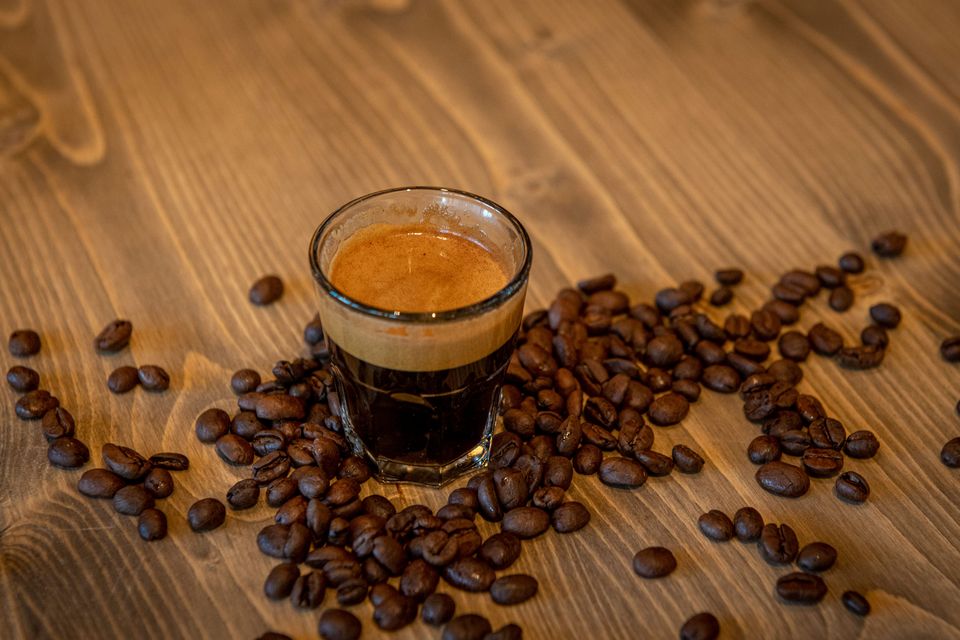For many, the fine foam on an espresso is the icing on the cake. As the saying goes, a coffee with crema has it all. But what is crema, how is it created, and what does it actually taste like?
Composition and origin
In simple terms, crema is formed when hot water comes into contact with ground coffee beans. In detail, however, it is a bit more complicated: Due to the high pressure of around 9bar various oils are emulated in the coffee powder - and on the other hand, CO2 particles are released that have formed in the coffee bean during the roasting process.
As soon as the brewed coffee leaves the portafilter, the pressure is released and the CO2 particles expand. The result? A fine foam forms over the coffee, but it is actually nothing more than CO2 bound in emulsified oils, proteins and sugar.
Duration of crema
The crema is only initially smooth, soft and creamy. Drainage causes the heavy oil particles to settle slowly, leaving the foam hard and perforated. This process takes about 45 minutes - in this respect, few people need to worry about it, because coffee is usually drunk in a few minutes.
Influencing factors
What is the consistency of crema? How does it taste? And how can a "tiger stripes" develop?
-
Roasting age
Over time, CO2 particles volatilize from the beans. This process accelerates if the bean packaging is left open - or if the coffee has already been ground. As these particles volatilize, the essence of the crema is lost. The fresher the roasting and grinding, the greater the crema.
-
Degree of roasting and CO2
Depending on the roasting process and coffee bean variety, different amounts of CO2 are stored or produced in the bean. Therefore, the rule of thumb is: the longer and/or darker the roast, the more crema.
-
Water
Water hardness also determines the type of crema. Hard water tends to be more frothy than soft water.
-
Machine type
Crema is created with the help of pressure. A portafilter machine produces a dense, elastic and shiny crema. A fully automatic machine uses less pressure and the crema tends to be more porous. Coffee capsules produce a lot of crema because the "trapped" CO2 in the capsule literally "explodes" with the quickly added pressure and the coffee flows out quickly and without much resistance. Filter coffee does not form crema because it is extracted only with natural earth gravity.
-
Coffee beans
Robusta, in contrast to Arabica coffee, contains more CO2 and only half as many oil particles. This makes it easier for foam to form, but the crema is not silky and elastic. In this respect, the choice of beans already determines whether ideal foam formation is possible at all.
-
"Tiger stripes"
Fine coffee particles reach the cup during extraction. Especially darker roasts (porous/"dry" beans compared to lighter roasts) ground with conical grinders produce many fine particles. Conical grinders grind more fine particles than flat grinders. These particles end up on the surface of the coffee during extraction and become elongated. A tiger pattern is create.

- Crema of arabica beans with "tiger stripes"
 - Crema of coffee with 50% robusta
- Crema of coffee with 50% robusta
Does crema make the perfect espresso?
The ideal coffee should contain at least ten percent crema, some textbooks say. This seems to be more for aesthetic reasons than for taste, because people enjoy "eye candy".
It is correct that a visually perfect crema is also formed from beans of very poor quality and/or roasting. In turn, it is true that many great coffee beans, especially those of light and medium roasting, do not produce a beautiful visible crema, but the espresso is a superb drinking experience.
The taste relevance of crema can be questioned very strongly, since crema itself tastes bitter, dry and ashy and feels floury in the mouth.
Crema, or no crema?
There are different opinions about crema. If crema is skimmed from the coffee, the beverage may taste sweeter and "juicier".
However, we think the crema should be stirred into the espresso. For many coffee drinkers, a certain positive bitterness is part of a balanced taste experience. Coffee always extracts in layers and these layers should be blended together. This creates a homogeneous taste experience.
Whether the coffee tastes better with - without - or stirred-in crema is a matter of taste. Try it out!
The Crema conclusion
Crema is and remains an aesthetic indication of fresh and high-quality coffee. It shows that the coffee has not come out of the brewer too quickly or too slowly. Whether a crema develops and what it looks like depends on various factors. In particular, the content of CO2 particles in the bean, the brewing water and the type of bean. Ultimately, you will have to decide for yourself: Is crema the icing on the cake of your perfect espresso?

